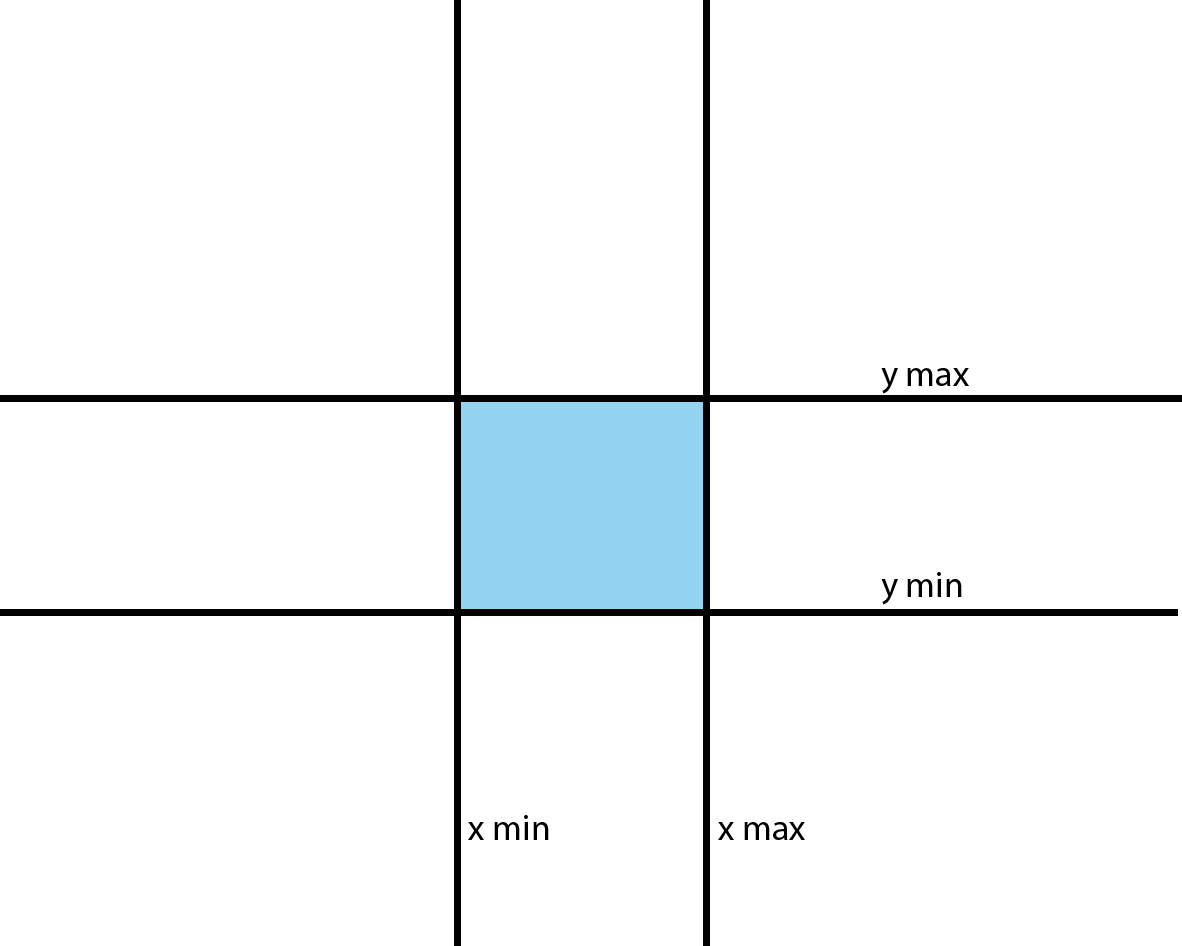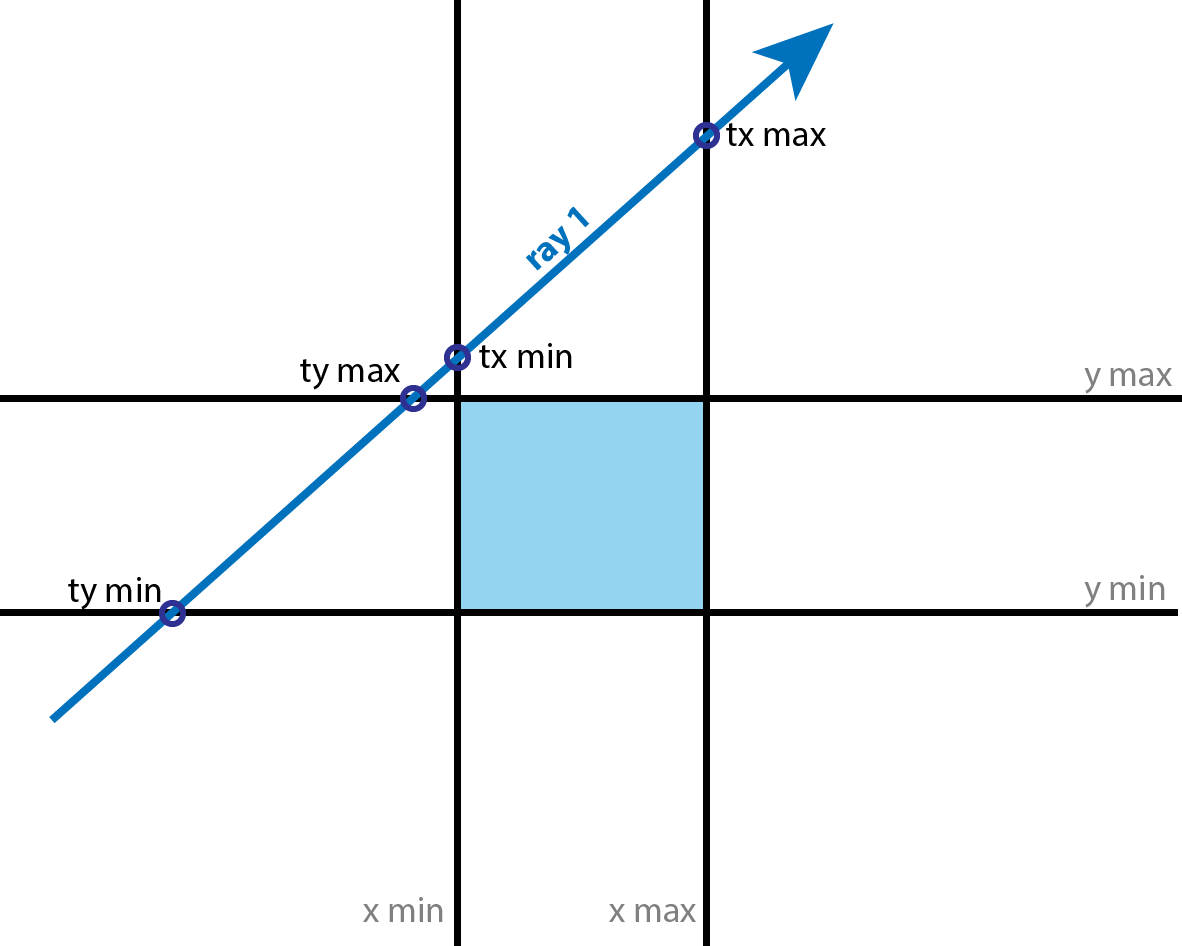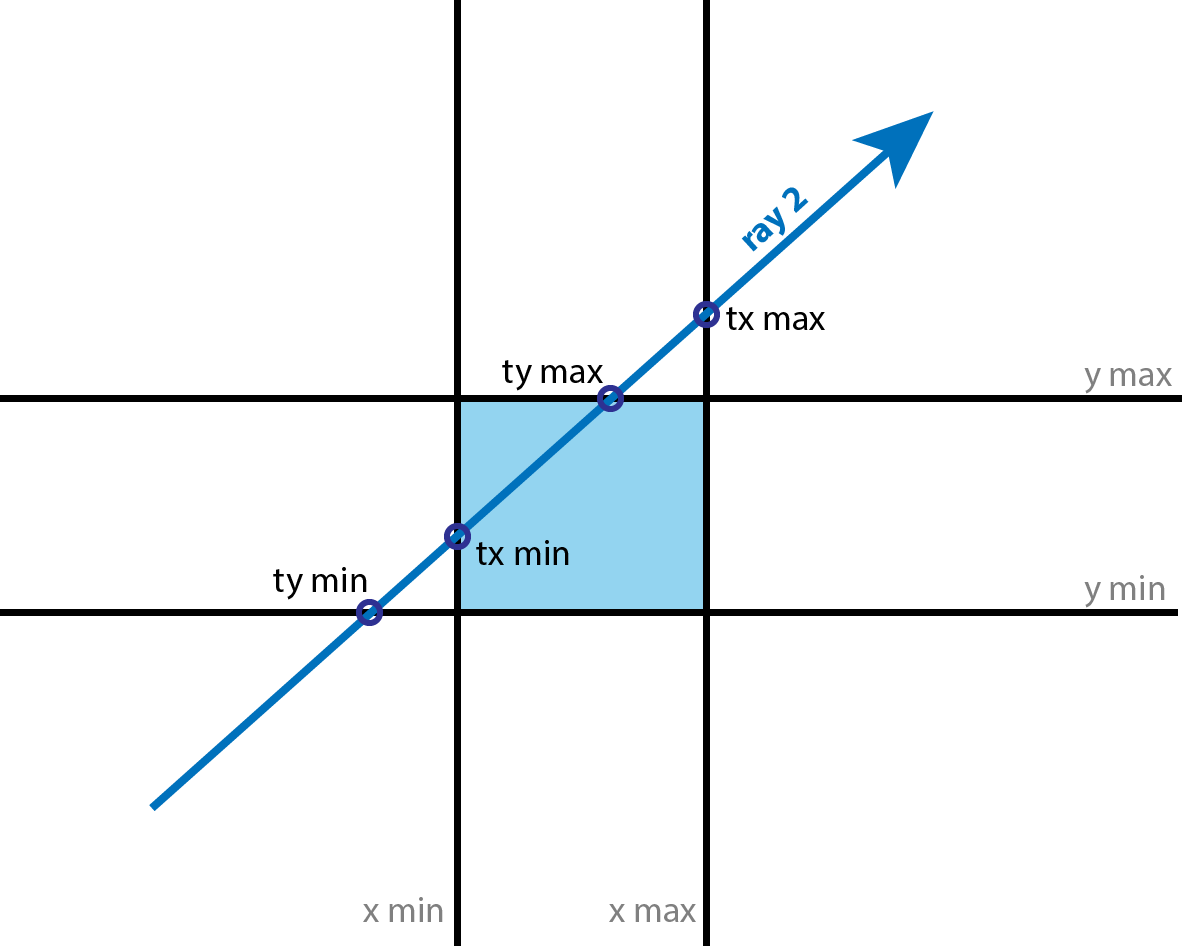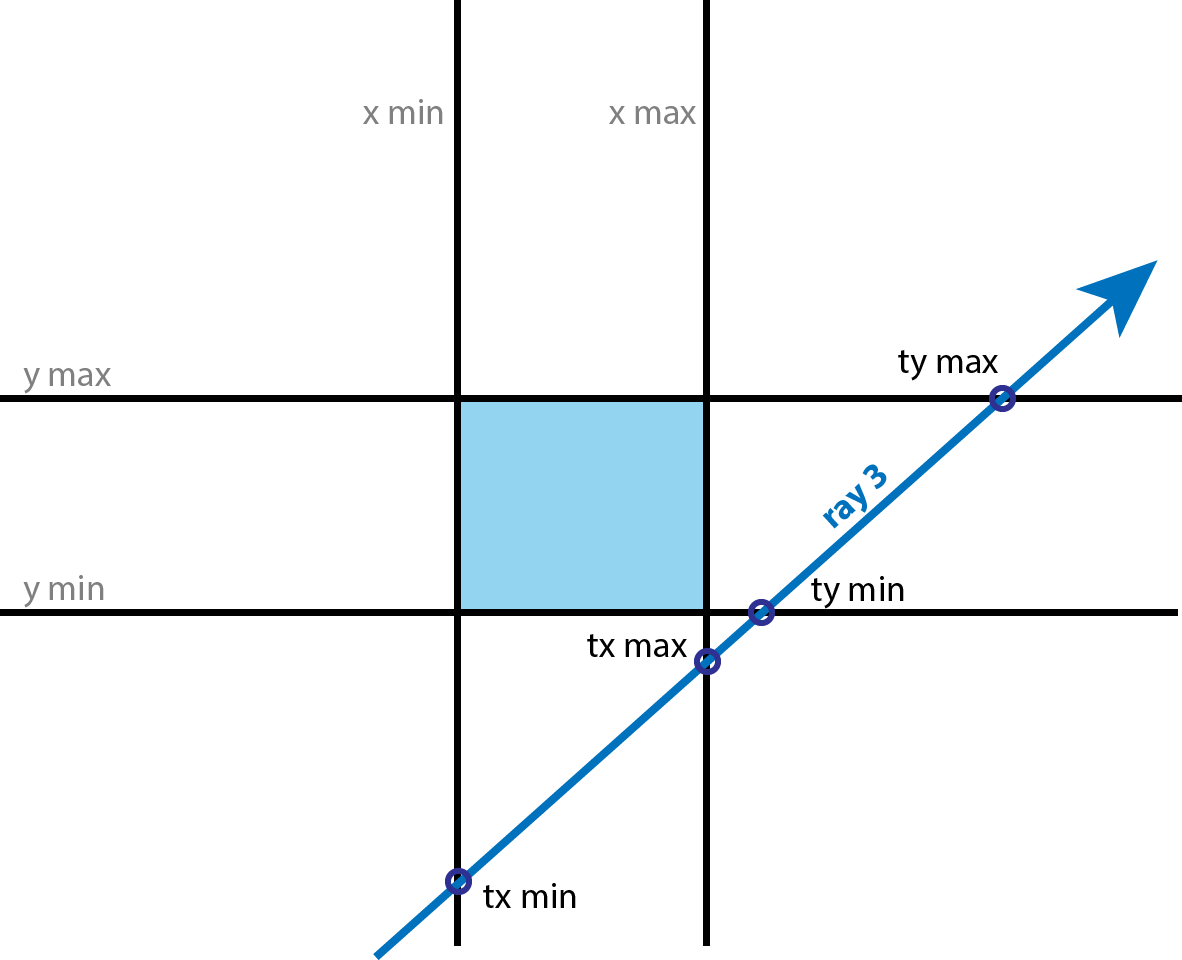Lecture 16: Boxes
Overview
We can represent a bounding box as a bounded region between and on the x axis, and between and on the y axis.


For a 3D box we simply need to add a similar constraint and . We’ll live in the 2D world for now.
For a given ray we can compute the intersections with all four of our parallel lines. We’ll call these intersections , , etc. These are the t values for the ray, intersecting with each of the four respective lines.


If the largest of the t ? min values is greater than the smallest of the t ? max values, then the ray does not intersect the box.
For example, in the above ray 1 we can see that , therefore there is no intersection.


For ray 2 we can see that the largest min value, is less than the smallest max value, , therefore there is intersection.


For ray 3 we can see that , therefore there is no intersection.
Intersections
So how do we find the intersection t values?
Recall our equation of a ray:
We can solve this for each dimension individually, thus we want to solve for t such that:
or
Thus we can compute the four t values:
And we can apply the test using the following pseudo-code:
if max(t_x_min, t_y_min) > min(t_x_max, t_y_max) then
return false # no hit
else
return true
Note that if the ray is traveling the opposite direction we need to swap the mins and maxes. In general we are concerned with the order in which the rays reach the two lines.
Thus we can generalize our approach (which also makes it easier to add a 3rd dimension later)
tgmin = -infinity
tgmax = infinity
# for x
t1 = (x_min - P_0_x) / dx
t2 = (x_max - P_0_x) / dx
if t1 > t2 then
swap(t1, t2)
# Because we want the closest t1 from the perspective of the ray
if t1 > tgmin then tgmin = t1 # not a typo - remember we are finding the largest of the mins
if t2 < tgmax then tgmax = t2 # smallest of the maxes
# same for y, z
if tgmin > tgmax then return false
if tgmax < 0 then return false # box behind
# If we're still here, it's an intersect, and tgmin is the intersction point
if (tgmin > 0)
return (true, tgmin)
else
return (true, tgmax) # Though we could be inside the box, in which case tgmax is the "exit" intersection
If the ray is parallel to any of the faces of our box, e.g. if dx == 0, we’ll get a divide-by-zero when we try to do this.
However, if that’s the case we just need to check the start point of the ray.
if dx == 0 then
if P_0_x < x_min or P_0_x > x_max then
return false
else
# Do the check we did before
Pov-Ray
In our .pov files, we are given the min and max of a box:
box {<-2, -3, -4>, <4, 3, 2>
pigment { color rgb <1.0, 0.2, 1.0>}
finish {ambient 0.2 diffuse 0.8}
}
This describes a box with min <-2, -3, -4> and max <4, 3, 2>.
Normal Calculation
To calculate the normal of a box at a given intersection point, we simply need to figure out which side of the box we hit. The normal is then implicitly understood.
if pt.x == min.x then
return vec3(-1, 0, 0)
else if pt.x == max.x then
return vec3(1, 0, 0)
else if pt.y == min.y then
return vec3(0, -1, 0)
# etc...
Note however that it is insufficient to simply use the == operator for float comparisons of this nature.
Due to the inherent imprecision of floating point values we need to check if pt.x is simply near to min.x.
If you’re using glm, there is a built in glm::epsilonEqual function that you can use in <glm/gtc/epsilon.hpp>.
It’s relatively simple to write our own espilon comparison method, though:
bool Equals(float const a, float const b, float const epsilon = 0.0001f)
{
return std::abs(a - b) < epislon;
}
Note that there is no one-size-fits-all approach to comparing float values. The correct technique is going to depend on the relative size and scale of values. For the units in our program, something like the above will work just fine.
If you’re interested in a slightly more in-depth look at floating point comparisons, this blog post is a good place to start.
Interactive Example
Example Code:
function FindIntersectTime(d, p0) {
tymin = (bbox_min.y - p0.y) / d.y;
tymax = (bbox_max.y - p0.y) / d.y;
txmin = (bbox_min.x - p0.x) / d.x;
txmax = (bbox_max.x - p0.x) / d.x;
if (tymin > tymax) {
var temp = tymin;
tymin = tymax;
tymax = temp;
}
if (txmin > txmax) {
var temp = txmin;
txmin = txmax;
txmax = temp;
}
smallestMax = min(txmax, tymax); // Smallest of maxs
largestMin = max(txmin, tymin); // Largest of mins
// If max of mins is < min of maxes, then miss
if (smallestMax < largestMin || smallestMax < 0) {
return -1;
}
if (largestMin > 0) {
return largestMin;
}
else {
return smallestMax;
}
}